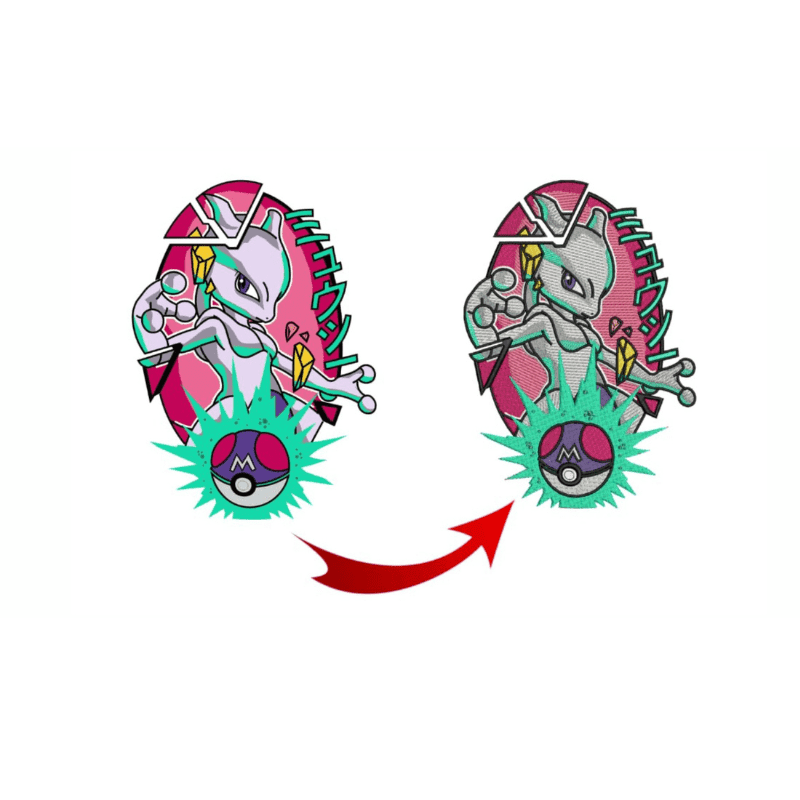Ideal Digitizing for Embroidery: Improve Your Tasks
Ideal Digitizing for Embroidery: Improve Your Tasks
Blog Article
Understanding the Embroidery Digitizing Process: Your Ultimate Overview
Needlework digitizing is a meticulous craft that needs precision and knowledge to equate intricate styles right into digital styles for maker needlework. As artisans embark on this journey to understand the embroidery digitizing process, a thorough understanding of the basics sets the structure for excellence.

Recognizing Embroidery Digitizing Basics
Needlework digitizing fundamentals form the structure whereupon intricate designs are equated right into machine-readable layouts for specific sewing. This first action in the needlework digitizing procedure is vital for making certain that the last stitched product is a faithful representation of the original layout. Recognizing needlework digitizing fundamentals includes comprehending essential ideas such as stitch types, stitch instructions, thickness, rug, and pull compensation.
Stitch kinds play an essential duty in establishing the aesthetic and textural outcome of the embroidered layout. By picking the proper stitch type, whether it be satin, fill, or running stitch, digitizers can achieve the desired result and improve the general quality of the embroidery. In addition, sew direction influences the circulation and measurement of the style, while density determines the spacing and coverage of the stitches.
In addition, padding sewing supplies stability to the layout by safeguarding the material and avoiding distortion during the needlework procedure. Pull settlement is an additional necessary consideration to counteract the all-natural propensity of fabric to contract when sewn. Mastering these embroidery digitizing basics is fundamental for developing professional-quality stitched products.
Picking the Right Digitizing Software Application
Picking the suitable digitizing software program is a vital decision that dramatically impacts the effectiveness and quality of the embroidery digitizing procedure. Digitizing for Embroidery. When picking the best digitizing software program, it is necessary to consider elements such as the intricacy of designs you prepare to develop, the user-friendliness of the software program, the level of client assistance supplied, and the compatibility with your embroidery device
There are numerous digitizing software options offered in the marketplace, ranging from fundamental programs for newbies to advanced software application for specialist digitizers. Some popular options consist of Wilcom EmbroideryStudio, Hatch Needlework Software Application, and PulseID. These software program packages provide a wide variety of devices and features to help you produce detailed designs with ease.
Prior to choosing, it is recommended to discover the various software application alternatives with complimentary tests or demos to figure out which one finest fits your needs. Additionally, reviewing evaluations and seeking recommendations from seasoned digitizers can give useful insights right into the toughness and weaknesses of each software package (Digitizing for Embroidery). By meticulously reviewing your demands and comparing the attributes of various digitizing software, you can make an enlightened selection that enhances your needlework digitizing process
Digitizing Tools and Techniques

Optimizing Style Settings for Needlework
Mastering the details of style settings is fundamental in attaining optimum results in the embroidery digitizing procedure, building upon the structure laid by comprehending digitizing tools and methods. When maximizing design settings for embroidery, it is vital to consider factors such as stitch type, density, padding, draw compensation, and registration. Registration settings line up various elements of the style properly, maintaining overall style honesty.

Troubleshooting Common Digitizing Issues
When running into typical digitizing concerns during the needlework procedure, it is vital to understand the origin creates and execute reliable services immediately. One common issue is stitch thickness issues, where stitches may be also dense, triggering the textile to pucker, or as well sparse, causing voids in the design. Readjusting the stitch thickness settings in the digitizing software application can aid fix this concern.
An additional frequent difficulty is string breaks during the embroidery procedure. This can occur because of numerous reasons such as inaccurate get redirected here stress setups, plain needles, or using low-quality thread. Making certain proper maintenance of the needlework machine, including normal needle changes and tension adjustments, can reduce the incident of thread breaks.
Additionally, layout enrollment mistakes can cause misaligned components within the needlework layout. Examining the layout placement in the digitizing software program and making essential changes prior to sewing can assist in preventing this problem. By dealing with these typical digitizing problems quickly and successfully, you can ensure a smoother needlework procedure and top quality completed products.
Conclusion
In conclusion, mastering the embroidery digitizing process calls for a strong understanding of the fundamentals, the ideal option of software application, and understanding of tools and techniques. Optimizing design setups and repairing typical digitizing problems are important action in making sure premium embroidery outcomes. By complying with these steps diligently, one can attain precision and efficiency in the digitizing procedure.
Report this page